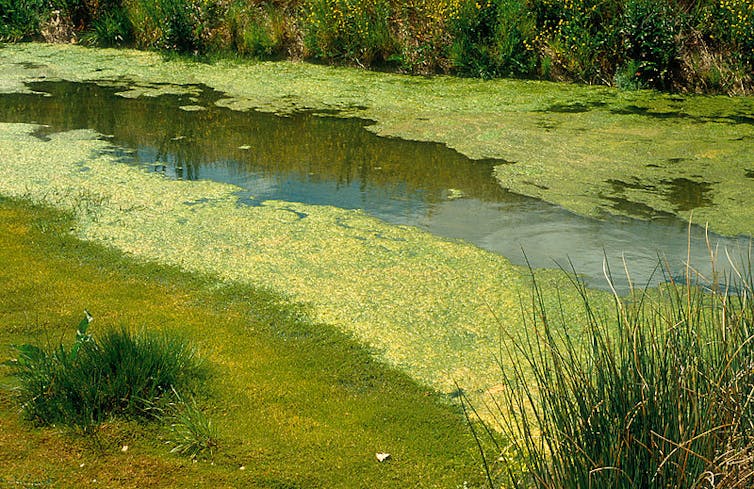Turbulence isn't just a science problem
- Written by Ivan Marusic, Professor of Mechanical Engineering, University of Melbourne
Making science for people is a series that explores how humanities, arts and social sciences expertise is applied to problems typically corralled into the science and technology space. The first piece in the series is here.
Today’s article takes a look at turbulence as a question of science – and of humanity.
Most of us have an understanding of what atmospheric turbulence is – nauseating plane movement is hard to forget.
But turbulence is all around us: not just in the air, but also in water, and even in crowds of moving people.
Perhaps surprisingly though, details around the science of turbulence are not all that well understood. Researchers studying flow and turbulence within different disciplines are yet to fully understand its complex operation – and as a result, solving problems related to turbulence is difficult.
Read more: Explainer: how dangerous is turbulence ... and can it bring down a plane?
Turbulence all around us
In a simple sense, turbulence can be described as a state of fluid flow. And although it makes some plane flights uncomfortable, turbulence in our atmosphere is essential to the existence of all life on earth.
Turbulence mixes heat, moisture, carbon dioxide and pollutants to and from the earth’s surface, maintaining our biosphere in a habitable state. Without turbulence, the air near the ground would be a lot hotter – when the sun is up, your feet would melt while your head would be freezing!
More than two-thirds of the Australian population live in capital cities, creating problematic forms of turbulence. Highly populated regions with reduced vegetation cover absorb heat from the sun and release it through buoyant turbulent plumes. This process can create complex micro-climates with significant air quality issues.
Read more: Walking mightn't be good for you if it's through Australia's polluted city streets
Smog and algal blooms are extreme circumstances where reduced levels of turbulence and flow affect us in a negative way.
 Blue-green algae (or cyanobacteria) grows when water turbulence is low.
Willem van Aken, CSIRO/ Wikimedia Commons, CC BY
Blue-green algae (or cyanobacteria) grows when water turbulence is low.
Willem van Aken, CSIRO/ Wikimedia Commons, CC BY
Turbulence in water certainly slows it down – without turbulence, drifting in a canoe on the Yarra River would happen at a hair-raising 2,000 km per hour, instead of a lazy one km per hour.
In engineering terms, our inability to precisely model and control turbulent flows leads to inefficient over-design, and limits future technologies in a vast array of applications. About 10% of all the electricity generated every year is currently consumed in the process of overcoming the effects of turbulence.
Turbulence - it’s complicated.Read more: Are toxic algal blooms the new normal for Australia's major rivers?
Da Vinci’s ‘turbolenza’
In the humanities disciplines, the notion of turbulence is widely employed in artistic representations and literary expressions right through to philosophical theories, economic modelling and descriptions of political revolution.
By contrast to their scientist counterparts, humanities scholars tend to use the concept of turbulence almost exclusively in a negative sense as disorder, disruption, agitation and commotion.
This sense of the word can be seen in one of the earliest documented considerations of flow patterns in water. Leonardo da Vinci, considering the whirling movement of water around an obstacle, described it as agitated and disrupted: as “turbolenza”.
 Da Vinci’s study of water issuing from a rectangular hole in a dam and forming whirlpools; with accompanying notes.
Royal Collection Trust / © Her Majesty Queen Elizabeth II 2018, Author provided (No reuse)
Da Vinci’s study of water issuing from a rectangular hole in a dam and forming whirlpools; with accompanying notes.
Royal Collection Trust / © Her Majesty Queen Elizabeth II 2018, Author provided (No reuse)
Da Vinci’s art and science did not occur in a vacuum but was deeply shaped by the world around him. This was a world at war, which drove him across the Italian states and eventually to France. Some of his studies of air and water flow, and his inventions adapting bird flight, were directly intended as contributions towards military technologies in these conflicts.
Turbulence, therefore, was not just an abstract research subject for da Vinci but also a lived experience, and its design applications a critical source of income.
Read more: Why Leonardo da Vinci was a genius
Looking at Leonardo reminds us of the crucial but often ignored point that studies of turbulence have a long history. Understanding this history is fundamental to grasping how turbulence has been conceptualised in the past, which has informed how we understand it now, and how we will conceive of it in the future.
Such considerations are determined by the current problems of the day – be they technological, cultural, social and/or political. One of the most urgent issues of our time – and one which encapsulates turbulence in all of these facets – is the refugee crisis. This has created a flow of humans across lands in proportions historically unprecedented.
The use of chemical warfare on civilians in Syria also reflects the intersections between industrialisation, atmospheric turbulence and human flow.
Read more: Syria's latest chemical massacre demands a global response
Solving problems with diverse expertise
Understanding turbulence better may reduce drag, improve efficiency, lower fuel use and create better environmental outcomes when flying. This is especially important to a country like Australia which relies so heavily on long-haul air travel.
How turbulence affects planes.Or, by establishing reliable and validated models for the magnitudes and scales of turbulence on wind and tidal energy farms, we could improve their reliability, and reduce risks associated with turbine failure and loss of power supply.
Understanding turbulence in coastal and inland waters will assist in identifying best practice maintenance of riverine, estuarine and coastal ocean health.
In the longer term, engineering capability regarding turbulence from may help us understand turbulent flow of people, for example following the use of chemical weapons in war and in refugee crises.
Partnerships across science, technology, engineering, arts and humanities help us consider how and why turbulence is understood in different cultural knowledge systems, and understand how turbulent flows in everyday and extreme contexts are understood, modelled, and managed.
That is how we can build a sustainable future.
Read more: Creating research value needs more than just science – arts, humanities, social sciences can help
Authors: Ivan Marusic, Professor of Mechanical Engineering, University of Melbourne
Read more http://theconversation.com/turbulence-isnt-just-a-science-problem-97171



